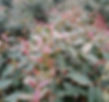Muguka and Miraa Farming in Kenya: Costs, Market Prices & Profitability
- BeyondForest
- Jun 23
- 7 min read
Updated: Nov 7
Image of Miraa by obaithibutu
0.)About Muguka
1.)Muguka Farming Regions in Kenya (Embu, Mbeere, Kirinyaga)
2.)Key Differences Between Muguka and Miraa
4.)Climate, Soil Requirements & Ideal Growing Conditions
5.)Muguka Planting Guide: Seeds, Spacing, Fertilizer & Watering
7.)Muguka Yields per Acre & Growth Timeline
8.)Muguka Market Prices in Kenya
10.)Challenges Facing Muguka Farmers (2025)
Muguka and Miraa are not the same, although they come from the same plant species (Catha edulis).
Muguka (like Miraa) contains naturally occurring stimulants called cathinone and cathine. These chemicals act very fast — usually within 15–30 minutes — so early communities could instantly feel:
more energy
reduced hunger
more alertness
less sleepiness
elevated mood
talkativeness
These effects made it very clear that this plant was not normal food but a stimulant.
Image of a Muguka Seedling by Murugi
Muguka is a fast-growing, drought-tolerant variety of khat (Catha edulis) predominantly cultivated in Embu, Mbeere, Kirinyaga, and parts of Tharaka-Nithi. It is closely related to miraa but differs in its smaller leaves, faster maturity, and stronger stimulant effect.
Image of a Man in a blue shirt sorting Muguka leaves by The River Tree Company
A single mature Muguka stem produces approximately 100–150 grams per harvest, and since harvesting occurs every 7–10 days, returns accumulate quickly. An acre of land accommodates 2,000–2,500 stems, providing consistent weekly income once the crop establishes.
Historically, Muguka emerged as a local crop in the semi-arid Mbeere region, where farmers preferred it due to its resilience, ability to survive harsh climatic conditions, and low production costs. Over time, it evolved from a subsistence plant to a major commercial cash crop as demand surged across urban and coastal towns.
Muguka has a strong market presence in Mombasa, Nairobi, the Coast region, and parts of Tanzania
Image of a Muguka Farm by Mkulima Young
A kilo of Muguka twigs typically sells for KSh 100–500 per kg during the rainy seasons (March–May and October–December). In the dry, sunny seasons when supply is low, prices rise sharply to KSh 500–1,500 per kg, making Muguka highly profitable for small and large-scale farmers.
Muguka is primarily used for its stimulant properties, derived from the natural alkaloids cathinone and cathine, which enhance alertness, energy, mood, and sociability. Unlike miraa, which is chewed together with its twigs, Muguka is consumed mainly for its tender leaves, making it cheaper and more accessible to younger consumers and low-income groups. Its popularity has grown due to its affordability, rapid harvesting cycle, and consistent availability throughout the year.
Males constitute 89.1% of active chewers . Highest consumption age group is 26–35 years.
Muguka Farming Regions in Kenya (Embu, Mbeere, Kirinyaga)

Muguka farming is concentrated in the warm, semi-arid regions of Embu, Mbeere and Kirinyaga, where the climate and soils perfectly support Catha edulis growth. Embu County, especially Mbeere South and Mbeere North, is the heart of Muguka production, with over 90% of households engaging in cultivation. The region’s red volcanic soils, low rainfall, and high temperatures create ideal conditions for rapid leaf regeneration. In Kirinyaga, Muguka thrives in lower elevations such as Kianyaga, Njegas, and Gichugu, where farmers have embraced it as a profitable alternative to maize and beans. These regions supply major markets in Mombasa, Nairobi, and Tanzania, sustaining a vibrant Muguka economy.
Key Differences Between Muguka and Miraa
Miraa has higher national consumption, but Muguka is growing fast regionally.
Miraa current use: 45%
Muguka current use: 23%
Image of Miraa bundles with red stems on the left, loose Muguka leaves on the right by Rada TV
Feature | Muguka | Miraa |
Leaf Size | Small, thin leaves | Bigger, broader leaves |
Potency | Considered stronger | Milder compared to Muguka |
Part Consumed | Mainly leaves | Leaves + twigs |
Main Growing Areas | Embu, Mbeere | Meru (Igembe, Tigania) |
Growth Rate | Faster, more drought-tolerant | Slower to establish |
Market | Strong demand in coastal and urban regions | Strong demand across local + export markets |
In Embu, 95.7% of households grow Muguka Only 45% grow Miraa
Benefits,Effects and Disadvantage of Miraa

Miraa offers several perceived benefits, especially among users who chew it for increased alertness, improved concentration, elevated mood, and reduced fatigue.
It is also a major economic crop in Meru and Embu, supporting thousands of families through farming, transport, and trade.
Miraa can lead to insomnia, reduced appetite, dehydration, irritability, and dependence when used regularly. Long-term chewing may cause dental discoloration, stomach discomfort, and increased heart rate. Social disadvantages include diversion of household income, reduced productivity, and strained family relationships.
Climate, Soil Requirements & Ideal Growing Conditions
Muguka is one of Kenya’s highest-value cash crops.
Average price: KSh 300–500 per kg
Peak seasons: KSh 1,000–1,500 per kg
Muguka thrives in warm, semi-arid climates with consistent sunshine and minimal rainfall, making Embu, Mbeere, and lower Kirinyaga ideal production zones. The crop performs best in temperatures between 24°C and 32°C, where heat promotes faster leaf regeneration. It grows well in well-drained red volcanic soils and loamy soils rich in organic matter. Muguka prefers slightly acidic to neutral pH levels and responds exceptionally well to manure-based nutrition. Because it uses about half the water required by maize, it is highly drought-tolerant and suitable for low-rainfall regions.
Muguka Planting Guide: Seeds, Spacing, Fertilizer & Watering
Image of Muguka Seedlings by Tosh Muguka
Plant Muguka using healthy seedlings sourced from reputable nurseries, as they establish faster and produce stronger stems. Prepare 2 ft × 2 ft planting holes and mix in generous amounts of well-decomposed manure to support early root development. Space the plants at 1m × 1m to allow enough room for branching and easy harvesting. Muguka thrives in semi-arid conditions, requiring far less water than maize, but consistent moisture is important during the first 2–3 months. After establishment, water only during prolonged dry spells. Avoid heavy chemical fertilizers—Muguka responds best to organic manure, proper weeding, and light mulching to conserve soil moisture.
Cost of Starting Muguka Farming per Acre (2025)

Image of Fred at a Muguka Farm in Embu
Starting Muguka farming in 2025 is relatively affordable compared to other cash crops. An acre requires 2,000–2,500 seedlings, costing between 40Ksh–100Ksh each, bringing seedling costs to 80,000Ksh–200,000Ksh. Land preparation, digging 2×2 feet holes, and spacing add another 20,000Ksh–35,000Ksh depending on labor rates. Organic manure for establishment costs 15,000Ksh–30,000Ksh, while initial watering during dry months adds 5,000Ksh–10,000Ksh. Pest control and basic maintenance may cost 5,000Ksh–15,000Ksh for the first year. Overall, the total cost of establishing one acre of Muguka ranges between 120,000Ksh–290,000Ksh, after which the crop produces weekly income for many years.
Hi, I’m Evans. Need Data Research or Analysis?
I help businesses gather the right data and turn it into actionable insights.
Muguka Yields per Acre & Growth Timeline
Muguka takes about 6 months to establish and another 6 months to begin consistent weekly harvesting. Once mature, each stem produces 100–150 grams per harvest, and with 2,000–2,500 stems per acre, farmers can harvest 200–350 kg per cycle. Because harvesting occurs every 7–10 days, Muguka provides continuous income throughout the year. Yields are highest in warm, semi-arid climates with good manure application and proper spacing
Muguka Market Prices in Kenya
During the rainy seasons—March to May and October to December—prices typically range between KSh 100–500 per kg due to higher production. In the dry, sunny months when supply drops, prices rise significantly to KSh 500–1,500 per kg. Coastal markets such as Mombasa and Lamu often record the highest demand. With weekly harvesting cycles, these price fluctuations make Muguka one of Kenya’s most profitable cash crops.
Muguka Value Chain: Selling to Brokers, Wholesalers & Exporters

Most farmers sell their daily harvest to local brokers, who collect directly from farms and transport it to major buying centers in Embu, Mbeere, and Siakago. From there, Muguka moves to wholesalers who distribute bulk consignments to high-demand markets such as Mombasa, Nairobi, and parts of Tanzania. Retailers then package it for end consumers. A smaller but growing segment involves cross-border traders exporting Muguka informally to Somalia and coastal regions, ensuring strong and consistent demand throughout the year.
Challenges Facing Muguka Farmers (2025)
Thrips are difficult to control with insecticides because their habits partially offer protection from insecticides (eggs are laid in plant tissue, adults shelter in flowers, and larvae pupate in soil) -Farmers Clinic

Erratic weather patterns, prolonged droughts, and occasional cold spells reduce leaf quality and slow regeneration.
Pest infestations such as aphids, red mites, scales, and whiteflies require constant monitoring and treatment.
Market prices fluctuate sharply between rainy and dry seasons, creating income instability for small-scale farmers.
Transport costs have increased, especially for farmers far from Embu and coastal markets.
Lack of standardized grading and unpredictable policies surrounding Miraa and Muguka also create uncertainty.
Additionally, overreliance on brokers limits farmers’ bargaining power, reducing their potential earnings.

What is Muguka?
Muguka is a drought-tolerant variety of khat (Catha edulis) grown mainly in Embu and Mbeere. It is valued for its stimulant leaves, which are sold fresh in local and regional markets.
Where is Muguka mainly grown in Kenya?
The major Muguka-producing regions are Embu, Mbeere, Kirinyaga, Meru, and parts of Tharaka-Nithi, thanks to their warm climate and well-drained soils.
How long does Muguka take to mature?
Muguka takes 10–14 months to reach first harvest. After that, farmers can harvest continuously for many years with proper pruning and fertilizer application.
How profitable is Muguka farming in Kenya?
Muguka farming is highly profitable due to low production costs and constant market demand. A well-managed acre can earn 250,000Ksh–600,000Ksh per year, depending on yield, market access, and harvest frequency.
Key costs include land preparation, seedlings, fertilizer, labour, pesticides, irrigation, and transport. On average, farmers spend 40,000Ksh–80,000Ksh to establish an acre.
How much Muguka can one acre produce?
A mature acre can produce 100–250 kg per week, depending on variety, spacing, and management.
What is the current market price of Muguka?
Wholesale prices range between 200Ksh–450Ksh per kg, while retail prices are higher depending on region and quality.
Muguka can be harvested weekly or biweekly once fully established, making it one of the most consistent cash crops in Kenya.
What challenges do Muguka farmers face?
Common challenges include pests, diseases, fluctuating market prices, high labour demand, and strict handling requirements to maintain leaf freshness.
Yes. Muguka performs well in semi-arid regions because it is drought-tolerant. Supplemental irrigation during dry months improves yield and leaf quality.












